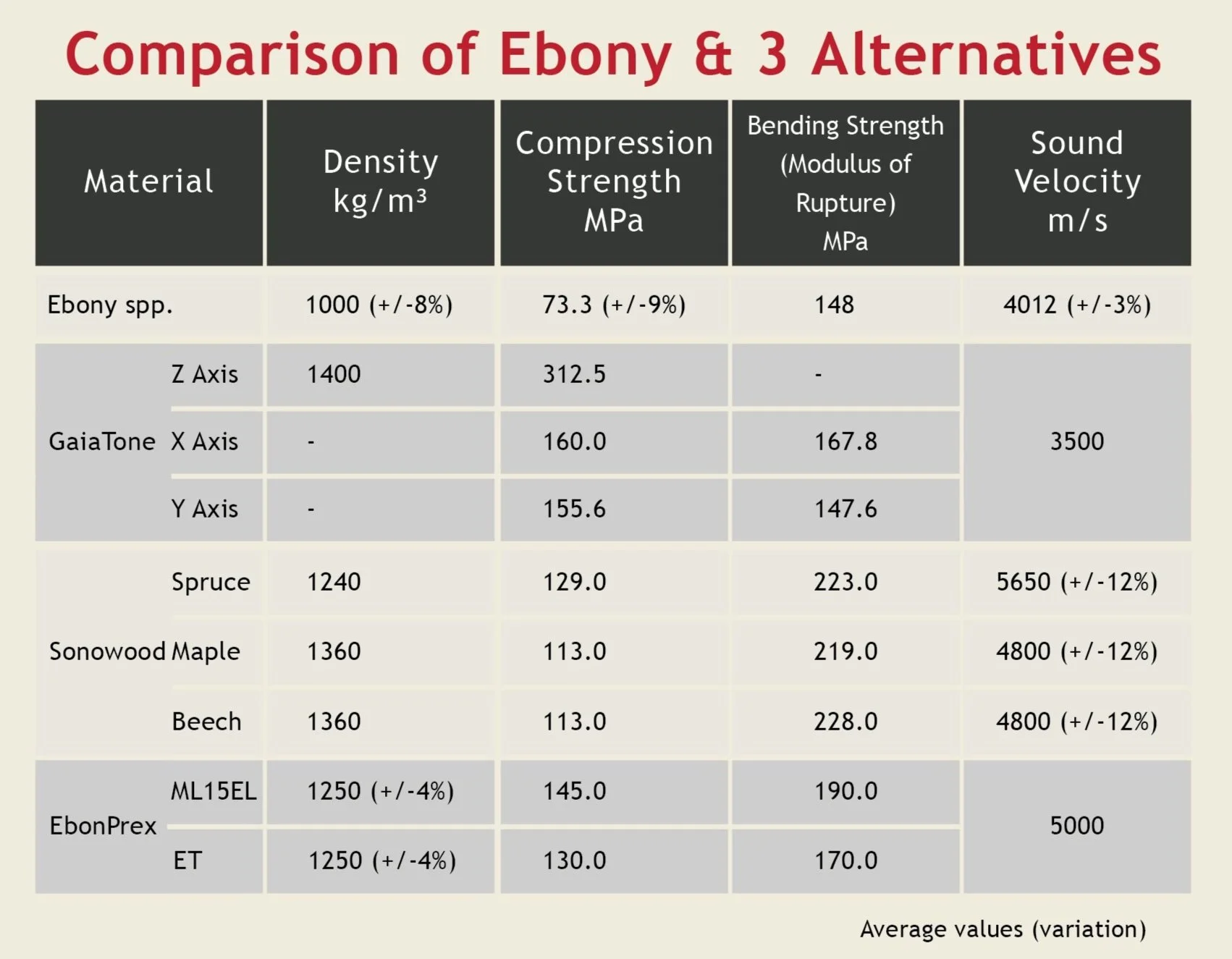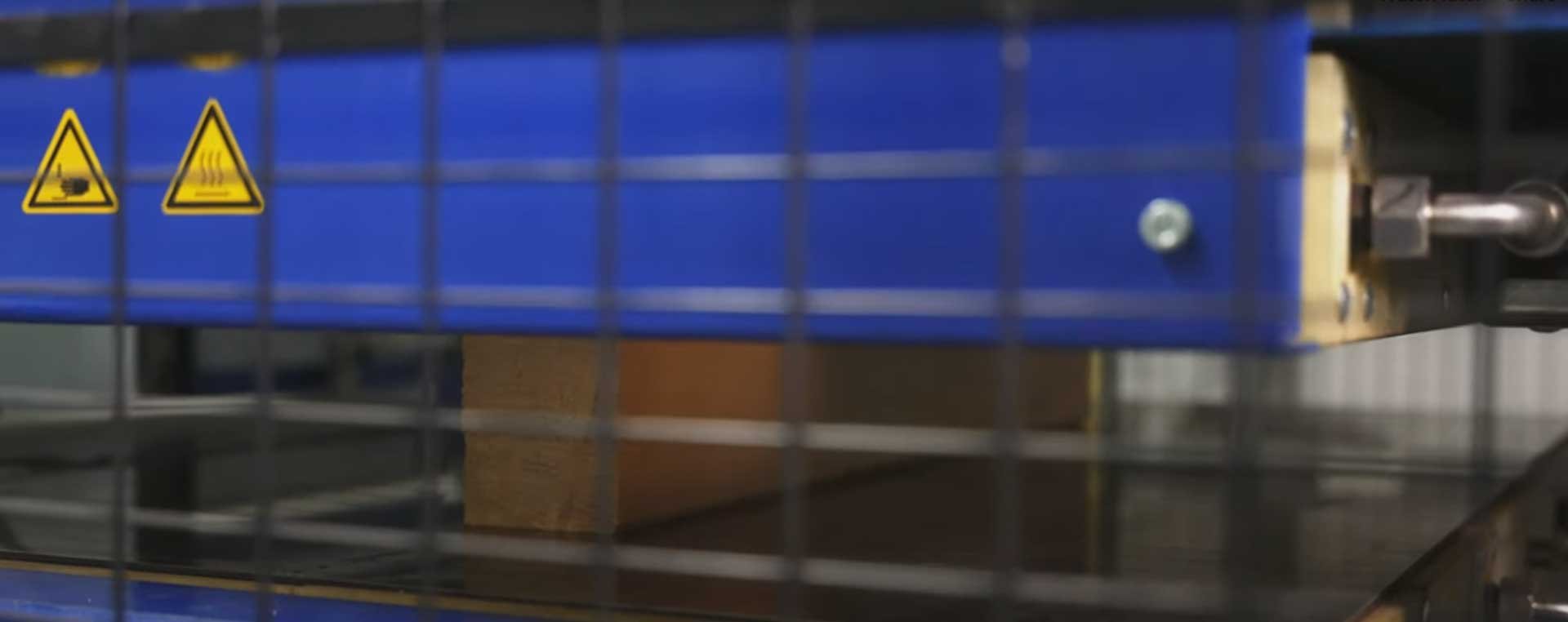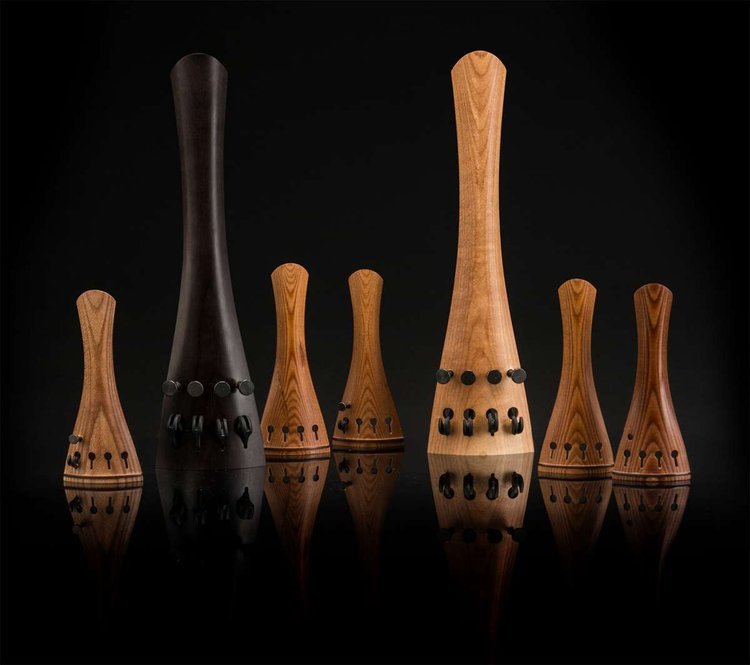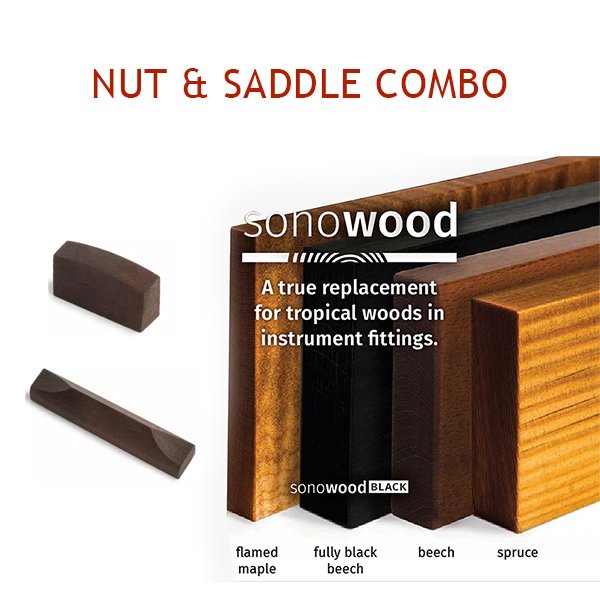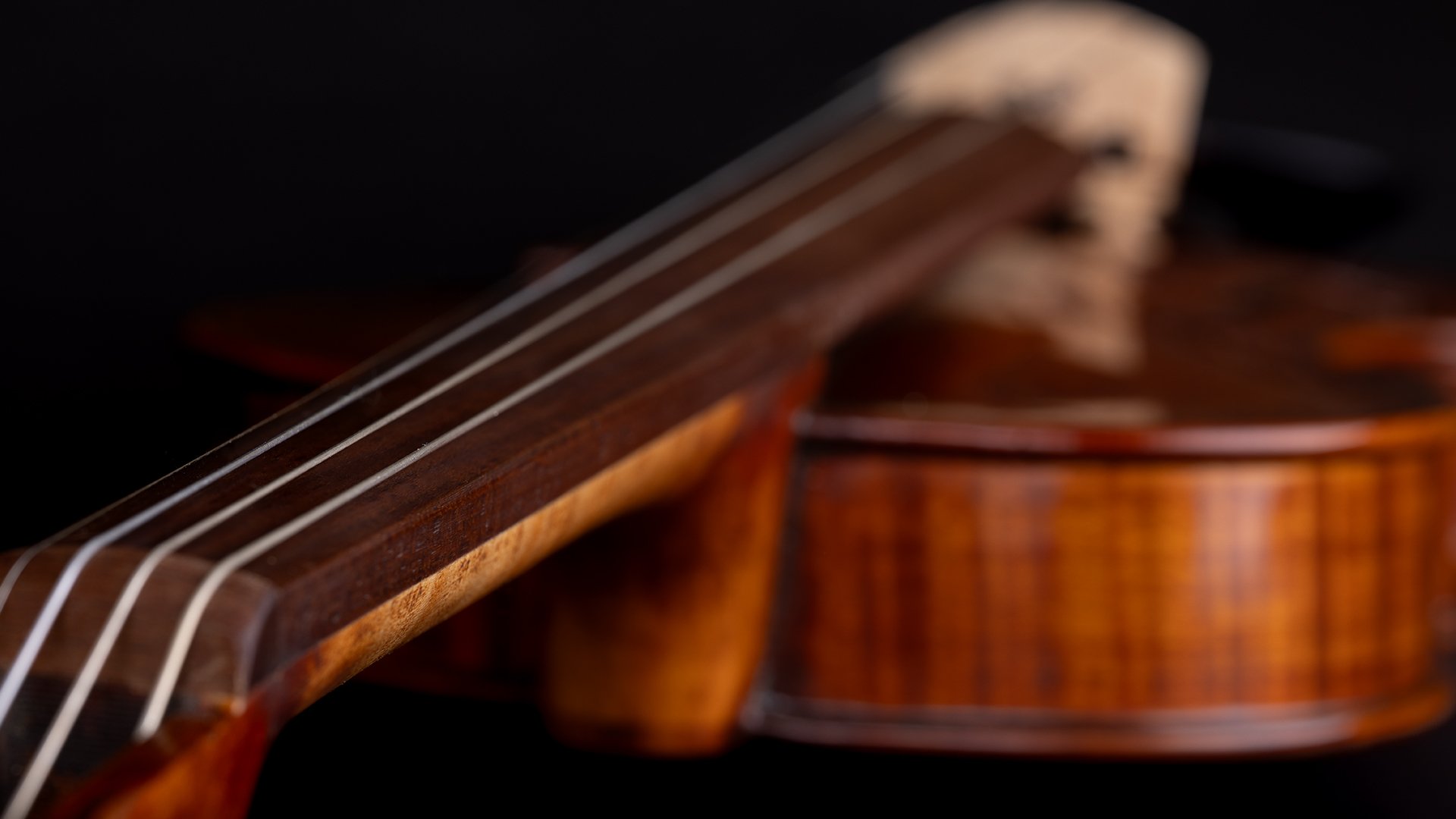
SONOWOOD
THE PERFECT ALTERNATIVE TO EBONY
Fingerboards I Tailpieces I Nuts & Saddle I Bow Frogs - For Violins, Viola, Cello, and Bass
Sonowood Pegs Coming Soon - Winter / Spring. Awaiting Tariff Reductions…
In response to the ecological, ethical, and legal concerns associated with the use of tropical woods in particular ebony in string instruments, Swiss Wood Solutions has developed the sustainable product Sonowood®.
SWS (Swiss Wood Solutions) targeted the fine-tuning of physical and acoustics properties of densified, sustainable wood material (spruce, maple & beech). The lab used compression to adjust crucial parameters such as density and sound-propagation velocity to develop ebony alternatives for the musical instrument market.
Sonwood is certified by "Swiss Wood" for sustainable sourcing.
BEHIND THE SCENES
How to cut Sonowood - Video guide from our V. Richelieu Workshop
COMPARISON CHART
*Definitions
GaiaTone X = horizontal
GaiaTone Y = Vertical
GaiaTone Z = Depth
m/s is the symbol for metre per second,
1 Newton per Square Millimeter (N/mm2)
The kilogram per cubic metre (Kg/m3)
MAKING OF SONOWOOD USING MACHINE COMPRESSION
Sonowood is a sustainable alternative wood for your musical instrument, made of 100% solid wood.
SONOWOOD BEARS A RANGE OF ADVANTAGES:
We use Sonowood fingerboards on our V. Richelieu instruments and they look pretty impressive. Click on the below link to see how they look on instruments.

“Sonowood and GaiaTone are both valid replacement options for ebony as the fingerboard, saddle, and nut material.
Since our industry is facing continuous pressure in investing in ebony alternatives to comply with current and future CITES designations in appendixes 2 and 3, I am very grateful that these new materials exist and can be incorporated into instrument making.”
“We have put fingerboards on instruments. Our luthiers liked them a lot. Jonathan especially has had a lot of fingerboard experience and he really loved working with it. Charlie too loved working on it and it glued on beautifully.”
TESTIMONIALS
Swiss Ebony project with the Gebert Rüf Foundation
Since March 2016 Swiss Wood Solutions has been financially supported by the Gebert Rüf Foundation. The private funding agency aims to boost entrepreneurial projects in Switzerland, which are committed to achieve an impact in current science and innovation challenges. Gebert Rüf has funded two projects at Swiss Wood Solutions. In the Swiss Ebony project, SWS succeeded to achieve dimensional stability of densified wood materials. The positive experimental results delivered the proof of concept and confirmed feasibility for the application of the material in the musical instrument market.
In the Swiss Ebony II project, which is set to run until June 2018, SWS targets the fine-tuning of physical and acoustics properties of the densified wood material. The adjustability of crucial parameters such as density and sound-propagation velocity enables SWS to acquire unique selling propositions in the musical instrument market. Thanks to the generous support by Gebert Rüf, Swiss Wood Solutions has established and initiated pilot production. Technology readiness level 6 (TRL 6) has been reached, implying the accomplishment of the prototyping phase. For violins and violas, market readiness has been achieved.
PURCHASE SONOWOOD PRODUCTS
If you have custom Sonowood requirements, please reach out to us by filling out the below form. Call for Cello Fingerboards pricing at (802) 862-0349.
FROG BLANKS
PACKAGES
TAILPIECES AND NUT & SADDLE
FINGERBOARDS
We are proud to use Sonowood on our latest V. RICHELIEU™ violins and violas as one more thing we can do to help our planet and to help shape our industry to conform to a higher sense of environmental responsibility. As the primary North American importer, we believe we have a wonderful opportunity to help spread the word on this remarkable material!
RealRoadAdventures, a North-American broadcast format about sustainable and conscientious traveling, visited Switzerland and stopped by at SwissWoodSolutions. Host Jeff Wilson was deeply impressed by their plastic-free SwissWoodCards and SonoWood as replacements for tropical hardwoods in music instruments.
Join Jeff during his visit and enjoy a brief insight into the swisswoodsolutions.ch Innovation incubator here: https://lnkd.in/eWqCCECW
Our special thank goes to Julia Müller from Zurich Tourism to Nicola Peverelli from Switzerland Tourism to the crew of Small World Productions LLC, and of course to Jeff Wilson (who certainly still enjoys his #fullwoodcard ;-))





